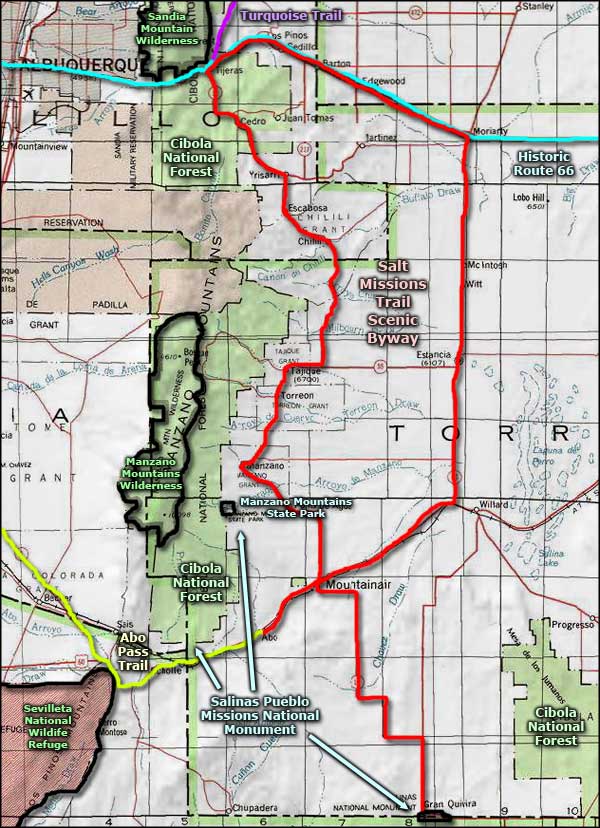Salinas Pueblo Missions National Monument
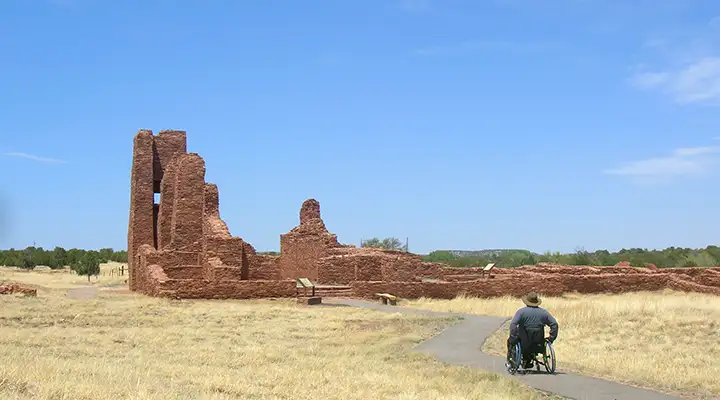
The ruins at Abo
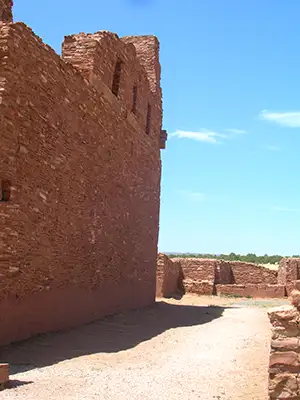
The ruins at Abo
Salinas Pueblo Missions National Monument contains about 1,077 acres broken into three widely-separated parcels. These were Tiwa- and Tompiro-language speaking pueblos when first discovered by the Spanish in the early 1600's. The Franciscan missionaries who accompanied the Spanish explorers felt these pueblos were particularly ripe for their missionary efforts. However, as was often the case when Europeans first came together with Native Americans, the spread of European diseases wiped out large numbers of the indigenous population. It also didn't help that one of those diseases was cholera: something the locals had no idea about because they had always known not to use their drinking water sources as toilets. Then a long-term drought set in and finished the job. By 1680, the entire district was essentially depopulated of Native Americans and Spanish settlers. What remains today are the ruins of the mission churches at Quarai, Abo and Gran Quivira and the partially excavated pueblo at Gran Quivira.
The Gran Quivira site was designated as a national monument in 1908. The other two sites were New Mexico State Monuments until they were absorbed into Gran Quivira in 1980. The whole was renamed in 1988.
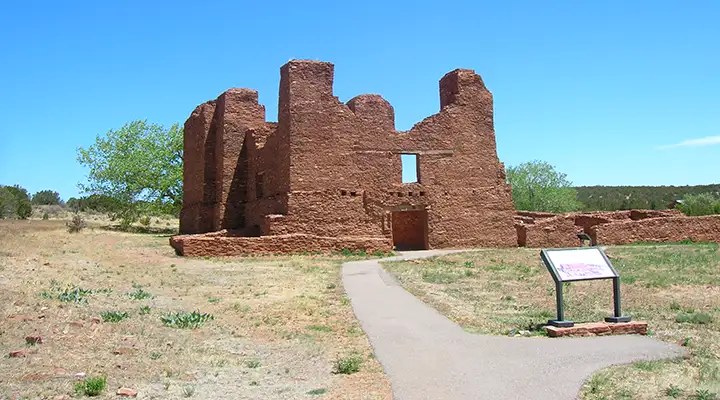
Ruins at Quarai
The northernmost set of ruins is at Quarai, about 8 miles north of Mountainair near Manzano. There is a visitor center on-site and a half-mile trail through the ruins. The Abo ruins are above Abo Pass, about 9 miles west of Mountainair. At Abo there's a visitor contact station with a quarter-mile trail through the mission ruins and a half-mile loop trail around the ruins of the unexcavated pueblo. The Gran Quivira ruins are the most extensive. They are located about 25 miles south of Mountainair. Near the parking lot is a small visitor center. From the visitor center a half-mile trail leads through the partially excavated pueblo ruins and past the ruins of the unfinished mission church.
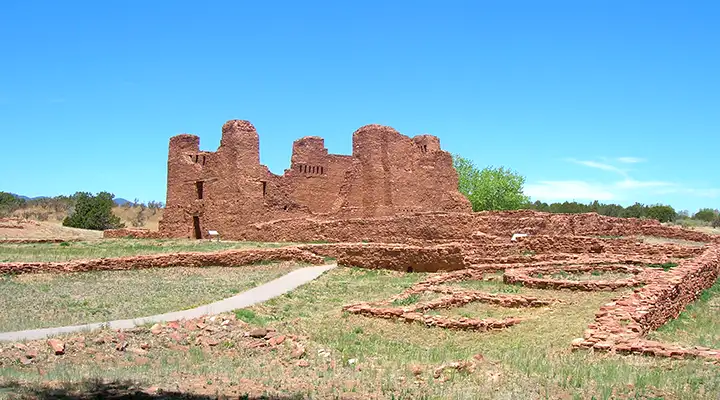
Ruins at Quarai
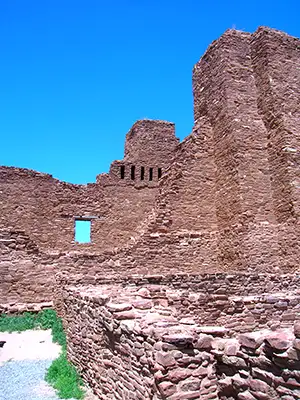 The ruins at Quarai
The ruins at QuaraiThe missions were built by Spanish priests directing native labor. The native pueblos were in this area because the Estancia Valley is a huge bowl with no outlet: all the rain and snow that falls around here drains into the center of the valley, pooling and then evaporating. Over the millions of years, that water flow built up a crust of salt on the surface of much of the land in the center of the valley. Back in those days, that salt was a very valuable trading commodity. These days, the alkalinity of the soil in the valley precludes any real agricultural development so when traveling through the valley, what you'll see is pretty much what has been here since the earliest days of Spanish and Mexican settlers.
When visiting any of these ruins, it's simply amazing to see the scale of the constructions. The Native Americans were living in pueblos the size of small cities at a time when many Europeans were still living in thatched huts. The Spanish priests felt they had to build missions large enough to impress the natives with the majesty of their religion, their God, their church...
Salinas Pueblo Missions National Monument is open daily except Thanksgiving Day, Christmas Day and New Years Day. Winter hours: 9 am to 5 pm. From Memorial Day to Labor Day: 9 am to 6 pm. The properties are day-use only, no camping is allowed. There are also no admission fees involved. The Salinas Pueblo Missions National Monument primary visitor center is located in Mountainair.
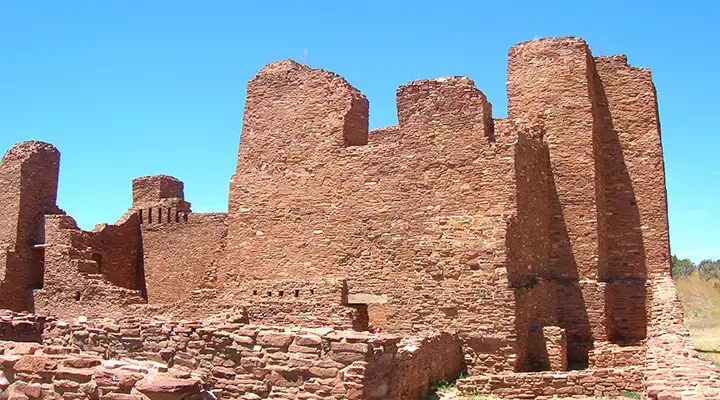
The ruins at Quarai
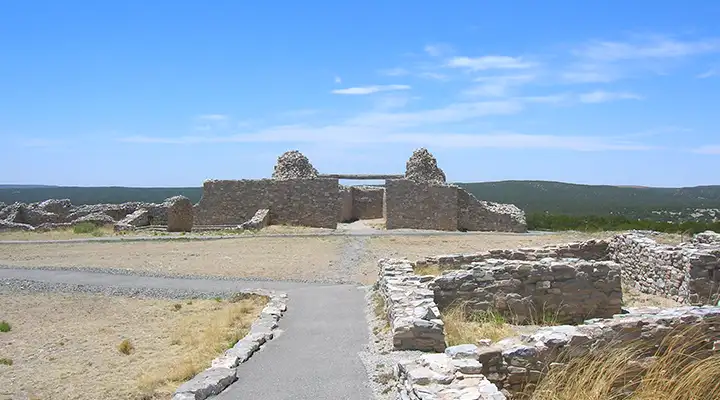
Gran Quivira
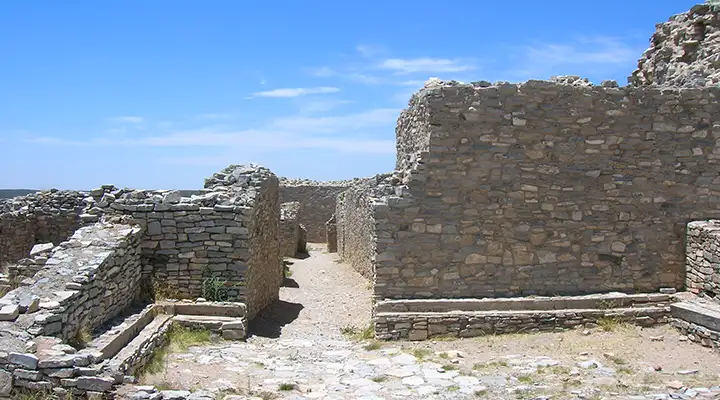
Another look at Gran Quivira
